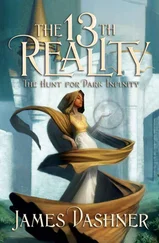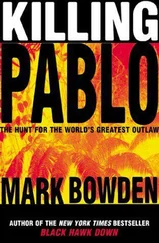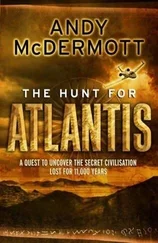More crucially, Jim Hobson’s ‘tracking’ inquiry was, over his profound objections, brought to an abrupt halt because the Mark II Ford Cortina was not on the list of vehicles which could have left the tyre marks at the Richardson murder scene. (As we now know, the Ford Cortina inquiry was a complete red herring. The security guard had seen Peter Sutcliffe’s car leaving the scene of Long’s attack, except he was driving a white Ford Corsair – which was on Hobson’s list of ‘tracking’ inquiry vehicles waiting to be eliminated.) But Oldfield was faced with a massive problem – lack of manpower. Eliminating 30,000 vehicles had been a colossal task, and Oldfield felt the remaining 20,000 vehicles would take forever to check. Experience had shown that, as you got nearer the end of such an inquiry, progress on eliminating one vehicle took far longer than the straightforward checks at the beginning. As an inquiry continued, the man hours that went into it got higher and higher in relation to the finished product, while the actual productivity of the investigating team got lower and lower. All the difficult vehicle checks were those that had dragged on and were left to the end. They were cars that had been sold to gypsies six times under false names, had gone through car auctions, had changed owners, had been stolen, written off or not correctly recorded on the fledgling PNC.
Oldfield thus found himself in a complete bind. He had major murder inquiries involving a maniac on the loose going on in Leeds and Bradford, and the tyre inquiry seemed never ending, with no assurance of success. ‘We were desperate for men,’ Holland said. ‘If you were warm and breathing you were on the bloody Ripper case. We had checked roughly 30,000 vehicles and eliminated those, but there were in fact 22,000 to go … Sutcliffe’s vehicle was in there and unfortunately it was missed.’
Hobson took the cancellation of the tracking inquiry very badly. In the incident room for the Long investigation at Bradford police headquarters, a few senior officers, including Holland, Oldfield and Hobson, were standing in a corner late one afternoon when Oldfield broke the news as a fait accompli. Hobson had seen the tyre inquiry as the one good chance to find the killer. They had a positive clue from a murder scene and his inquiry ought to run its course. Now they were suddenly looking for a Ford Cortina. Oldfield believed the Ripper had changed cars. There was a good chance the one which made the tyre tracks in Roundhay Park had been destroyed. Hobson was furious, visibly angry and muttering under his breath. But the decision had been made. The Leeds murder squad believed Oldfield was being deliberately partisan because of his known disagreements with the senior city detectives. It was a fracture in relationships that never really healed.
The Ripper by now had murdered five women: McCann, Jackson, Richardson and MacDonald in Leeds; and Atkinson in Bradford. The police believed he had attacked Long, intending to kill her, and were now casting an eye over several other serious assaults on women. In reality there were eight other women that Sutcliffe had almost certainly attacked in the West Yorkshire area, though the squad had ruled most of them out as Ripper attacks because they could not rule them in for certain. Indeed, they were gripped almost by a phobia of putting an attack into the Ripper series, for fear it would turn out not to be his handiwork and might contaminate the investigation with erroneous evidence. Moreover, if the Ripper was caught and prosecuted for one murder he did not commit, he could escape justice. Thus Tracey Browne and Marcella Claxton along with several other victims were never included in the series, though there was an extraordinary similarity in the photofit descriptions they had given, which now lay unnoticed in police files. Day by day the cost of the investigation was assuming mountainous proportions: 300 officers had worked 343,000 man hours; 175,000 people had been questioned, 12,500 statements taken and 101,000 vehicles checked. The attempt to find the man with a ginger beard said to have been seen by witnesses in the MacDonald and Jackson inquiries was stepped up. Police had 117 tips of men who bore such a description. They traced fifty-six such men and eliminated them; the rest were never found because there was no real clue to their identity. Already inside the mountain of paper were the clues and the evidence that could have identified the Yorkshire Ripper.
In the mid-1970s the backbone technology of British industry, its businesses and institutions, was still a Victorian invention: the typewriter and shorthand note. Computers were as yet the hugely expensive private tools of government, vast number crunchers gobbling up and spewing out punchcards. They occupied whole floors to do the work a child’s toy can perform today, but the world was still only on the verge of the revolution.
Within a year or two advertisements began to appear in colour supplements offering home computers to be built by hand, whose programming language needed to be learned before simple mathematic problems could be solved and tic-tac-toe games played. Pocket calculators, costing the equivalent of a working man’s weekly wage, were finding their way on to the market. But the white heat of silicon technology was still ten years from our desk tops. The Home Office, the government department primarily responsible for the security and policing of Britain, wanted to be at the forefront of this revolution. The computer, when it arrived, would be a vital tool in the battle against crime, reducing the burden on manpower and budgets and speeding up detection. But the use of computers and the application software would have to be tailor-made to the task, specifically designed to handle, sort, cross-check and deliver information.
In August 1976, the House of Commons learned that the Police Scientific Development Branch at the Home Office was studying the use of computers to assist the investigation of major crimes like murder. Computers, according to the Home Office minister, Dr Shirley Summerskill, would organize the collection of information and the identification of key elements in murder inquiries. Parliament was debating criticism of the police handling of the Black Panther inquiry when Dr Summerskill reiterated a key principle of British justice affecting any criminal inquiry – that overall command in an investigation rested ultimately with the chief constable: ‘It is for him to decide when to call for assistance and help and what to call for.’ So if a chief constable wanted a computer, he had to ask for one. For the overburdened West Yorkshire Police in the summer of 1977 it seemed like a lifeline – or at least a straw to clutch at.
Ronald Gregory therefore set up a working party at his headquarters in Wakefield to look at ways of using computers in the Ripper inquiry. The force’s new Computer Project Unit in turn approached the Home Office to see how close its scientists were to achieving the goal of a computerized incident room which could actually handle a complex murder investigation. They had been working on the problem for three years. After several meetings, the West Yorkshireman learned that more development work was needed by government scientists and the Police Research Services Unit before they could hand over a computer they were certain was reliable. The only experimental working police computer in the country was in Staffordshire, in the Midlands. The working group and Gregory paid a visit, but the project was still in its infancy and the budget for the experiment was prohibitive, already running at more than £1 million.
Breakthroughs were being made in pushing back the frontiers of computerized systems, but in August 1977, when the West Yorkshire force needed one as a matter of desperate urgency, no machine was available. The writing of programs of such complexity was in its infancy. Moreover, three of the most senior Home Office scientists had just departed from the project, leaving only a junior colleague to work on the necessary research.
Читать дальше












